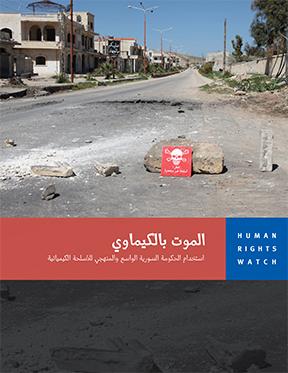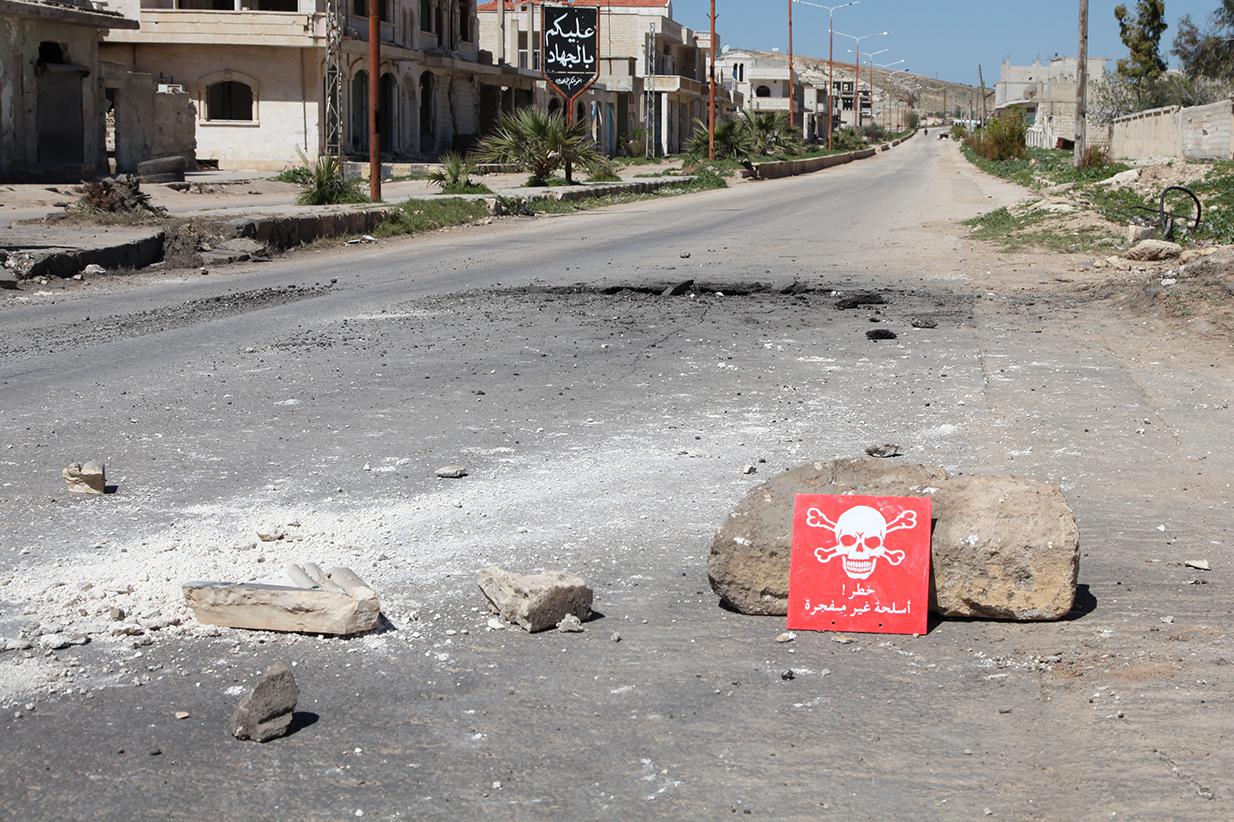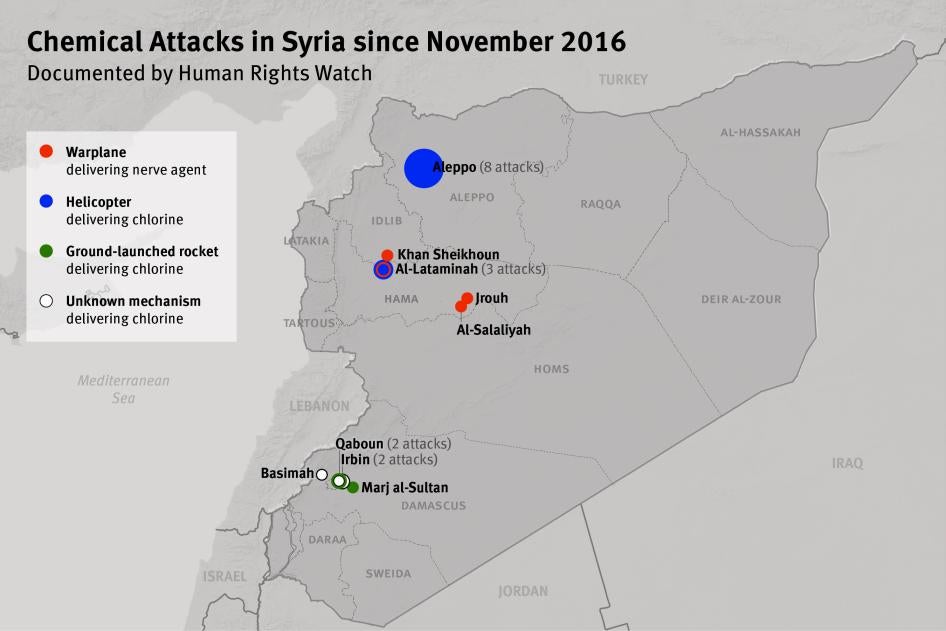Government Enters Realm of Crimes against Humanity
 (New York) – New evidence supports the conclusion that Syrian government forces have used nerve agents on at least four occasions in recent months: on April 4, 2017, in a chemical attack on Khan Sheikhoun that killed at least 92 people, and on three other occasions in December 2016 and March 2017, Human Rights Watch said in a report released today.
(New York) – New evidence supports the conclusion that Syrian government forces have used nerve agents on at least four occasions in recent months: on April 4, 2017, in a chemical attack on Khan Sheikhoun that killed at least 92 people, and on three other occasions in December 2016 and March 2017, Human Rights Watch said in a report released today.
These attacks are part of a broader pattern of Syrian government forces’ use of chemical weapons. The attacks are widespread and systematic and in some cases have been directed against the civilian population. These two features mean the attacks could meet the legal standard required to characterize them as crimes against humanity. As part of the evidence showing these attacks have become widespread and systematic, the 48-page report, “Death by Chemicals: The Syrian Government’s Widespread and Systematic Use of Chemical Weapons,” identifies three different systems being used to deliver chemical weapons:
- Government warplanes appear to have dropped bombs with nerve agents on at least four occasions since December 12;
- Government helicopter-dropped chlorine-filled munitions have become more systematic;
- Government or pro-government ground forces have started using improvised ground-launched munitions filled with chlorine.
In at least some of the attacks, the intention appears to have been to inflict severe suffering on the civilian population.
“The government’s recent use of nerve agents is a deadly escalation – and part of a clear pattern,” said Kenneth Roth, executive director of Human Rights Watch. “In the last six months, the government has used warplanes, helicopters, and ground forces to deliver chlorine and sarin in Damascus, Hama, Idlib, and Aleppo. That’s widespread and systematic use of chemical weapons.”








